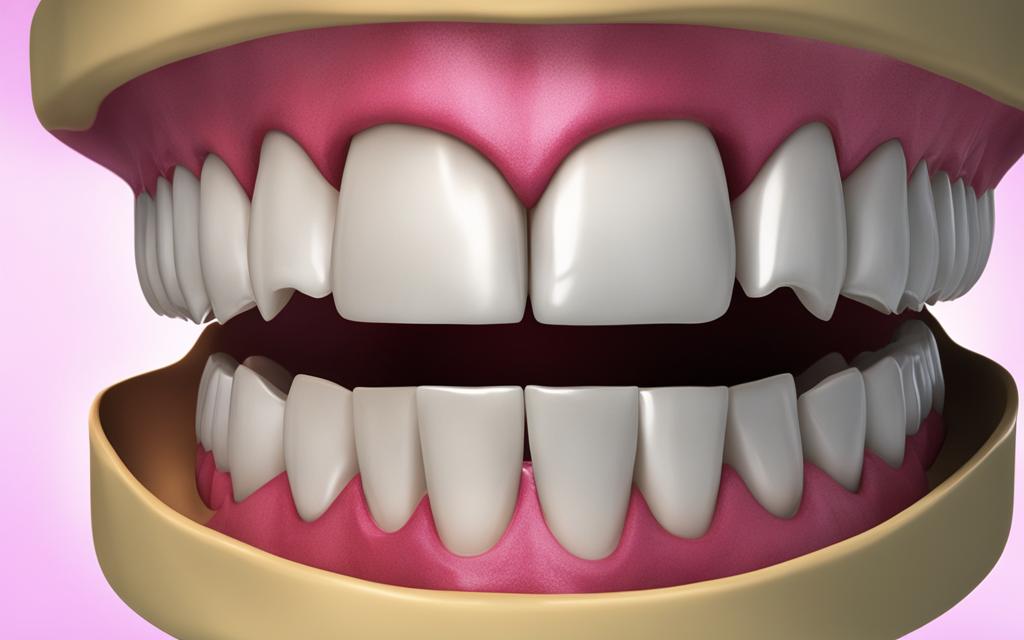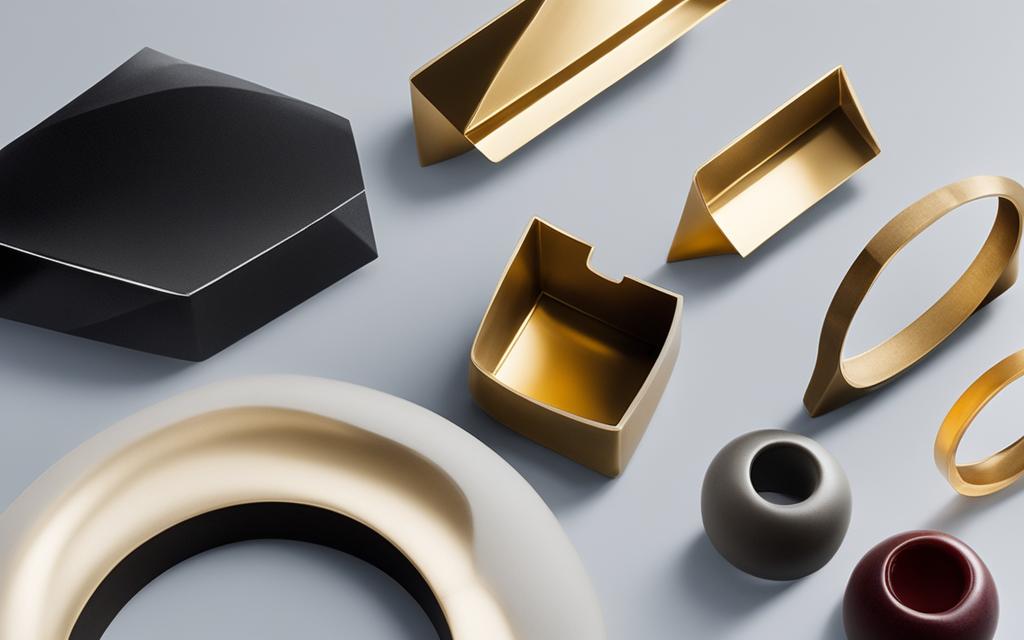If you have recently had a temporary crown placed, you may be wondering if it is safe to continue vaping. Temporary crowns are a short-term solution used to protect a damaged tooth while a permanent crown is being prepared. It is important to follow proper care guidelines to ensure the success of your dental work and avoid any potential complications.
Temporary crowns are typically made of materials such as acrylic, stainless steel, composite resin, polycarbonate, or zinc oxide eugenol. These materials are strong and durable enough to withstand normal chewing and biting forces. However, vaping can have negative effects on dental work, including temporary crowns.
Table of Contents
Toggle- When Do You Need a Temporary Crown?
- What Are Temporary Crowns Made Of?
- Conclusion
- FAQ
- Can I vape after getting a temporary crown?
- When do you need a temporary crown?
- What are temporary crowns made of?
- Is it safe to smoke after getting a temporary crown?
- How should I take care of my temporary crown?
- What are the effects of vaping on temporary crowns?
- Can I smoke after getting a temporary crown?
- How long can a temporary crown be in place?
- Why do I need a temporary crown for severe tooth decay?
- Can I vape after temporary crown placement?
- Related posts:
Key Takeaways:
- Vaping after getting a temporary crown can pose risks to your dental work.
- Proper care for a temporary crown includes avoiding smoking and vaping.
- Avoiding hard or sticky foods, hot and cold liquids, and being gentle when brushing and flossing are important for temporary crown care.
- Consult with your dentist about the safety of vaping with a temporary crown.
- Following your dentist’s recommendations for temporary crown care is crucial for the longevity and effectiveness of your dental work.
When Do You Need a Temporary Crown?
There are various situations in which a temporary crown becomes necessary. Let’s explore some of the common reasons why patients may require a temporary crown:
- Waiting for a permanent crown: Sometimes, the dentist needs to send precise measurements to a laboratory for the fabrication of a permanent crown. During this waiting period, a temporary crown serves to protect the tooth and maintain its function.
- Treatment for severe tooth decay: When decay has progressed extensively, a temporary crown may be necessary to safeguard the tooth from further damage and prevent the spread of infection.
- Recovery from trauma: Whether due to an accident or injury, trauma can lead to significant damage to a tooth. A temporary crown aids in restoring the tooth’s structure and provides protection while it heals.
- Chipped or cracked teeth: Temporary crowns are an effective solution for chipped or cracked teeth. They help to strengthen the tooth and maintain its shape until a permanent solution can be implemented.
- A “long-term” replacement: In certain cases, such as for children and young adults with teeth that are still developing and shifting, a temporary crown can serve as a cost-effective and removable solution until they are eligible for a permanent crown.

As shown in the table below, temporary crowns address a range of dental conditions, ensuring both short-term and long-term dental health:
| Condition | Reason for Temporary Crown |
|---|---|
| Severe tooth decay | To protect the tooth and prevent further damage or infection |
| Trauma | To restore and protect the damaged tooth during the healing process |
| Chipped or cracked teeth | To strengthen the tooth and maintain its shape |
| A “long-term” replacement | A cost-effective and removable solution for teeth still in development |
Temporary crowns play a crucial role in dental care, providing both immediate protection and facilitating the transition to permanent dental solutions.
What Are Temporary Crowns Made Of?
Temporary crowns are an essential part of the dental restoration process, providing temporary protection for damaged or decayed teeth while the permanent crown is being prepared. These crowns are made from various materials that offer strength and durability, ensuring the tooth remains protected throughout the treatment period.
Here are some common materials used for temporary crowns:
- Acrylic: Acrylic is a popular choice for temporary crowns due to its strength, durability, and ease of shaping. It provides a sturdy and reliable solution to protect the tooth until the permanent crown is ready.
- Stainless Steel: Stainless steel temporary crowns are frequently used for children’s teeth because of their exceptional strength and durability. These crowns can withstand the daily wear and tear of a child’s active lifestyle while providing reliable protection.
- Composite Resin: Composite resin is a tooth-colored material that can be shaped and color-matched to blend seamlessly with the patient’s natural teeth. It offers both aesthetic appeal and functional strength, making it an excellent choice for temporary crowns.
- Polycarbonate: Polycarbonate is a plastic material reinforced with microglass fibers, providing exceptional strength and durability. It is often used for temporary crowns in the front teeth, where aesthetics play a vital role in the overall appearance.
- Zinc Oxide Eugenol: Zinc oxide eugenol is a material known for its antimicrobial properties. It is commonly used in various dental restorations, including temporary crowns, to help prevent infections and promote optimal oral health during the treatment process.
Each material used for temporary crowns has unique characteristics that make it suitable for specific situations and patient needs. Your dentist will consider various factors, including the location of the tooth and the desired aesthetic outcome, when selecting the most appropriate material for your temporary crown.

Conclusion
Proper care and precaution are essential when dealing with a temporary crown after dental work. While temporary crowns provide protection for damaged teeth, it is crucial to follow proper care guidelines to ensure their longevity and effectiveness. This includes avoiding hard or sticky foods, refraining from hot and cold liquids, and practicing gentle brushing and flossing techniques.
However, one habit that should be avoided is vaping after getting a temporary crown. Vaping can pose risks to your dental work, including delayed healing, increased risk of infection, loosened teeth, discoloration, and sensitivity. It is advisable to consult with your dentist about the safety of vaping with a temporary crown and to follow their recommendations for temporary crown care.
By taking the necessary steps to protect and care for your temporary crown, and by avoiding potentially damaging habits like smoking and vaping, you can ensure the long-term success and durability of your dental work. Remember, your dental health is important, and proper care is crucial to maintaining optimal oral hygiene.
FAQ
Can I vape after getting a temporary crown?
It is not recommended to vape after getting a temporary crown. Vaping can pose risks to your dental work, such as delayed healing, increased risk of infection, loose teeth, discoloration, and sensitivity. It is best to consult with your dentist about the safety of vaping with a temporary crown and follow their recommendations for temporary crown care.
When do you need a temporary crown?
Temporary crowns are used in various situations, including waiting for a permanent crown to be provided by the laboratory, treating infection or decay before receiving a permanent crown, allowing time for the dentist to assess the condition of the tooth, or getting a dental bridge and awaiting the permanent bridge. They are also used for severe tooth decay, trauma, chipped or cracked teeth, and as a cost-effective solution for children and young adults whose teeth are still growing.
What are temporary crowns made of?
Temporary crowns are typically made of materials such as acrylic, stainless steel, composite resin, polycarbonate, or zinc oxide eugenol. Acrylic is strong, durable, and easy to shape, while stainless steel is commonly used for children’s teeth due to its strength. Composite resin can be color-matched to your natural teeth, and polycarbonate is ideal for front teeth where aesthetics are important. Zinc oxide eugenol is known for its antimicrobial properties and can be used for various dental restorations.
Is it safe to smoke after getting a temporary crown?
Smoking after getting a temporary crown is not recommended. Smoking can have detrimental effects on your dental work, including delayed healing, increased risk of infection, loosening of teeth, discoloration, and sensitivity. It is important to quit smoking and follow your dentist’s recommendations for temporary crown care to ensure the success and longevity of your dental work.
How should I take care of my temporary crown?
Proper care for a temporary crown involves avoiding hard or sticky foods, staying away from hot and cold liquids, being gentle when brushing and flossing, and quitting smoking. It is important to keep scheduled follow-up appointments with your dentist to ensure the temporary crown is functioning properly, and to monitor the progress of the permanent crown.
What are the effects of vaping on temporary crowns?
Vaping can have negative effects on temporary crowns, such as delayed healing, increased risk of infection, loose teeth, discoloration, and sensitivity. It is advisable to avoid vaping with a temporary crown to ensure the success and longevity of your dental work.
Can I smoke after getting a temporary crown?
Smoking after getting a temporary crown is not recommended. Smoking can have detrimental effects on your dental work, including delayed healing, increased risk of infection, loosening of teeth, discoloration, and sensitivity. It is important to quit smoking and follow your dentist’s recommendations for temporary crown care to ensure the success and longevity of your dental work.
How long can a temporary crown be in place?
The duration for which a temporary crown is kept in place can vary depending on the reason for the crown and the individual patient’s circumstances. In general, temporary crowns are meant to be short-term solutions while the permanent crown is being prepared. It is important to keep scheduled follow-up appointments with your dentist to ensure the temporary crown is functioning properly and to monitor the progress of the permanent crown.
Why do I need a temporary crown for severe tooth decay?
When a tooth is severely decayed, a temporary crown may be necessary to protect it and prevent further damage or infection. The temporary crown allows time for any necessary treatment, such as root canal therapy, before the placement of a permanent crown. It provides a barrier to protect the tooth while ensuring that normal tooth function and structure are maintained.
Can I vape after temporary crown placement?
It is not recommended to vape after temporary crown placement. Vaping can pose risks to your dental work, such as delayed healing, increased risk of infection, loose teeth, discoloration, and sensitivity. It is best to consult with your dentist about the safety of vaping with a temporary crown and follow their recommendations for temporary crown care.

